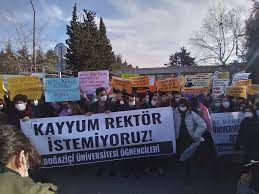The Emergency Architects Foundation (EAF),upon the request of the Union of Municipalities of Southeast Anatolia (Güneydoğu Anadolu Bölgesi ‐ GABB), participated in an assessment mission to evaluate the damage caused to buildings during the curfew period established by government authorities in September and October 2015 in several cities of the region.
The assessment was coordinated by the GABB and carried out by the Union of Chambers of Turkish Engineers and Architects (Türk Mühendis ve Mimar
Odaları Birliği ‐ TMMOB). Site visits were organized by the EAF and conducted with the agreement and implementation support of the municipalities. Read in PDF
The EAF assessment mission team was composed of architects, and engineers that have experience in damage assessments caused by natural disaster (Nepal 2015, Philippines 2013, Haiti in 2010) and conflict (Libya 2012, Aceh 2010, Chad, 2010, Sri Lanka in 2008, North and South Lebanon in 2007). The mission took place from 24 to 28 October 2015.
EAF is a recognized “public utility” non‐governmental organization that has been involved in the evaluation of damaged buildings in 33 countries since 2001. It is committed to the principles of humanity, impartiality, neutrality and independence and therefore is oriented towards the vital needs of populations at risk while excluding other criteria (i.e. political, religious, ethnic, social etc.). The foundation has offices in France, Canada and Switzerland.
The GABB coordinated assessment has two main components: Ecology and Human Rights, both of which conclude a heavy death toll, not included in this report and subject to controversy. EAF’s approach has been purely technical and largely based on factual interviews and site visits.
The assessment took place during daylight hours and always in the company of Municipal representatives. Relations with officials and local inhabitants was always serene. Access to the damaged areas was not subject to the control of the security forces. The team was able to move freely and whenever necessary to enter inhabited buildings. Members of security forces were neither visible at the scene of assessments nor encountered.
Table of Content
*Assessment Mission and Team Composition
Location and localization of the assessment
*Dammage assessment in Sur (Diyarbakir)
-On Sunday, 25 October and Monday morning, 26 October a meeting took place with the vice mayor of Diyarbakir, a representative of the municipality, and an architect familiar with the evaluated area. Several buildings were visited corresponding to an estimated 50% of the destruction according to the local representatives
-General appearance
-Route tracking
-Observations analysis
-Damage causes
* Silvan damage assessment
-General appearance
-Route tracking
-Observations analysis
-Damage causes
*Damage assessment in Cizre
-General appearance
-Some repairs have been carried out to restore the walls but almost all of projectile impacts and observable traces remain
-Route tracking
-Observations analysis
-Damages causes
*Conclusion Read in PDF



